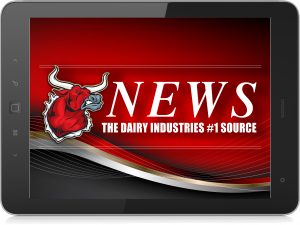Unlock profits with Class III milk futures. Ready to boost your dairy farm‘s earnings? Discover top tips and strategies in our ultimate guide.
Summary: Class III milk futures can be a game-changer for dairy farmers looking to stabilize their income. They offer a reliable way to predict and protect future earnings, secure wages, and achieve financial stability by locking in milk pricing before production, ensuring consistent income despite market volatility. A University of Wisconsin study found that using futures contracts can stabilize income by up to 20%. To dive into Class III milk futures, find a reliable broker, understand market trends, develop a trading strategy, and follow industry experts and news outlets.
- Class III milk futures help dairy farmers stabilize income and predict future earnings.
- These futures lock in milk pricing before production, ensuring consistent income despite market fluctuations.
- A University of Wisconsin study indicates futures contracts can stabilize income by up to 20%.
- Steps to get started: find a reliable broker, understand market trends, develop a trading strategy, and stay updated with industry news.

Are you weary of variable milk costs reducing your profits? Dairy farming is difficult enough without the added concern of shifting pricing. But what if there was a method to secure your wages, save for the future, and attain financial stability? Understanding Class III milk futures may transform your company. Integrating these futures into your plan allows you to lock in pricing while mitigating the risks associated with market volatility. Imagine having the ability to anticipate your income months in advance. This information not only helps you make better business choices, but it may also lead to significantly higher profits. Many dairy producers have employed this method successfully. So, why offer your farm an equal advantage? Knowing Class III milk futures might benefit your dairy company.
What Are Class III Milk Futures?
Have you ever wondered how dairy farmers shield themselves from the unpredictable nature of milk prices? The answer lies in Class III milk futures, a financial tool that’s more than just a safety net.
Class III milk futures are financial contracts that help to stabilize your income. They allow dairy producers like you to lock in milk pricing before production. In this manner, you can ensure a consistent income, regardless of how volatile the market becomes.
Here’s how they work: you commit to selling a specific milk volume at a predetermined price. This agreement enables you to hedge against future price declines and provides a sense of security and stability. Locking in future pricing allows you to escape the worry of market volatility, giving you a more predictable income.
So, why should you care? These contracts provide peace of mind. When milk costs fall, you are protected. You receive the price you locked in, even if the market falls. However, if prices rise, you may lose out on increased earnings. However, many farmers value consistency, particularly in a volatile market.
Understanding Class 3 milk futures may be a game changer for those in the dairy sector. It’s a tool that allows you to control your financial situation.
Unlocking Financial Stability with Class III Milk Futures
Trading Class III Milk Futures is one of the most effective strategies for managing a dairy farm. Why? They provide several advantages that might dramatically improve your bottom line.
First and foremost, Class III Milk Futures enable you to lock in pricing. Imagine not having to worry about unexpected dips in milk costs. With these futures, you can lock in a guaranteed price for your milk regardless of market volatility. A University of Wisconsin research study found that utilizing futures contracts may help stabilize income by up to 20%.
Risk management is another significant benefit. Dairy farming is unpredictable. A variety of variables, like changing feed prices and unexpected weather, might have an impact on your earnings. Class III milk futures provide a safety net. Setting a price in advance reduces the danger of market swings. According to one industry analyst, “Futures contracts work like an insurance policy for farmers.”
To summarize, trading Class III Milk Futures allows you to lock in pricing, control risks, and prepare for a successful future. Isn’t that a possibility to consider?
Ready to Dive Into Class III Milk Futures? Here’s Your Step-by-Step Guide!
So you’ve chosen to invest in Class III milk futures—an excellent pick! Let’s divide this into simple stages. Ready? Let’s go!
Step 1: Find a Reliable Broker
Your first move? It would be ideal if you had a competent broker. Do your homework. Look for brokers with good reputations and expertise in agricultural commodities. Consult your other dairy producers for advice. Trust is essential here.
- Verify the broker’s credentials. Are they registered with the Commodity Futures Trading Commission (CFTC)?
- Inquire about their prices and commissions. You don’t want hidden expenses reducing your profitability.
- Consider their trading platform. Is it user-friendly? Does it provide real-time data and analytics?
Step 2: Understand Market Trends
Now, let’s discuss numbers. It would be excellent if you kept up with market trends. Keep up with USDA reports and industry news. Familiarize yourself with CME data on Class III futures. Scroll through the agriculture forums. You would be shocked at how much you can pick up!
- Monitor monthly milk production updates from USDA (ERS USDA).
- Follow industry experts and news outlets for insights. Market trends can change quickly.
Step 3: Develop a Trading Strategy
A solid plan can make all the difference. Here’s a simple framework to get you started:
- Define Your Goals: Are you hedging against price volatility or looking to make a profit?
- Risk Management: Decide how much risk you can tolerate. Never invest more than you’re willing to lose.
- Set Entry and Exit Points: Know the prices you’ll buy and sell at, and stick to your plan.
- Use Stop-Loss Orders to protect yourself from significant losses. A stop-loss order will help you sell automatically if prices fall too low.
- Review Periodically: Assess your strategy regularly. Be flexible and adjust to new market trends.
Have you got all of that? Great. You are now ready to start trading Class III milk futures. Remember that successful trading requires study, discipline, and patience. Happy trading!
Mistakes to Avoid When Trading Class III Milk Futures
- Skipping Research: One of the most common blunders is jumping in without sufficient investigation. Always be aware of market developments and economic data that impact milk pricing. Use sites like GDT Insight to acquire the most recent changes.
- Ignoring Market Trends: Never trade on assumptions. Pay careful attention to market patterns and seasonality. For example, knowing that US milk output in 2023 stayed constant but imports climbed by 1.0% might give helpful information.
- Failing to Set a Budget: Like any other investment, trading milk futures carries certain risks. Set a trading budget and stick to it. This will help you handle any losses and keep your money in order.
- Over-Trading: It’s tempting to get caught up in the enthusiasm and make a lot of deals. This might result in avoidable losses. Stick to your trading approach, and don’t overtrade.
- Not Using a Reliable Broker: Select a reputable broker who knows the dairy sector. A skilled broker can provide helpful guidance and insight.
- Neglecting Margin Requirements: Monitor margin needs, such as the $1,320 margin maintenance. Ensure you have sufficient cash to satisfy these criteria and prevent liquidation.
- Ignoring the Financial Calendar: Major reports and data releases may substantially influence milk prices. Always keep track of impending news and plan your transactions appropriately.
- Lack of Diversification: Do not put all your eggs in one basket. Diversify your assets to mitigate risk. Consider additional dairy-related assets to help balance your portfolio.
Expert Tips
Think you’ve got the fundamentals down? Great! Now, let’s look at some advanced suggestions and best practices for making the most of Class 3 milk futures. You’ve gone this far, so why not become a professional?
Leverage Seasonal Trends
Did you know that milk output increases in the spring and summer? This is related to cows’ natural breeding cycles. Use this to your advantage. Look for contracts that mirror these seasonal tendencies to make better trading selections. Purchasing futures before the peak production months might help you lock in cheaper pricing.
Diversify Your Portfolio
Do not put all your eggs in one basket (or all your milk in one tank). Diversify your bets in dairy futures markets. Consider researching alternative types of milk or even related commodities such as cheese futures. This method reduces risk while also providing several profit opportunities. Diversification is crucial for risk management and capitalizing on different market possibilities.
Stay Updated with Market News
Timely information is critical in the dairy futures market. Subscribe to industry magazines, newsletters, or GDT Insight for real-time market information. A rapid shift in milk exports or a new government policy might influence pricing. Staying informed allows you to respond swiftly and make sound judgments. In today’s fast-paced economy, information is power.
Use Technical Analysis
If you haven’t yet done so, now is the moment to get started with technical analysis. Use charts, candlesticks, and indicators to comprehend price fluctuations better. Historical data patterns help predict future developments. Many effective traders get an advantage by combining technical analysis with a solid grasp of market fundamentals.
Engage in Regular Review and Adjustment
Your trading approach should be active. Regularly evaluate your trading performance and alter techniques based on what works and what doesn’t. Do you continually need significant market moves? Or is your timing wrong? Analyzing your trading record might reveal areas for improvement.
FAQ
What exactly are Class III Milk Futures?
Class III Milk Futures are financial contracts that enable you to purchase or sell milk at a set price on a future date. Consider locking in a price now to protect yourself against market volatility.
How can Class III Milk Futures benefit my dairy farm?
You may use these futures to control risk while also stabilizing income. By hedging against unfavorable price changes, businesses may preserve profitability and pay expenses even when market prices decline.
What do I need to start trading Class III Milk Futures?
First, look for a broker that knows the dairy sector and these particular futures contracts. You’ll also need to understand market trends and devise a robust trading plan for your farm’s requirements.
Is there a lot of risk involved in trading these futures?
While there is some danger, as with any financial instrument, a well-planned approach may help to limit it. The goal is to be educated and base your judgments on facts and industry trends.
How do I keep up with market trends for Class III Milk?
Stay informed by subscribing to industry news, reports, and market assessments. Use tools like the GDT Insight subscription to get accurate and timely data. Being knowledgeable is essential for making sound trading selections.
Can I start trading Class III Milk Futures on my own?
While it is feasible, it is advised to get expert advice first. Engage with a reputable broker and begin trading in modest increments to acquire a feel for the market before plunging in ultimately.
Want to Dive Deeper? Boost Your Knowledge with These Resources!
- CME Group: Introduction to Dairy Markets – A comprehensive online course by the Chicago Mercantile Exchange.
- Milk Marketing and Management’s Business: Financial Success with Class III Futures—This detailed book is available on Amazon.
- Dairy Challenge – A national education program that could provide practical insights into dairy futures.
The Bottom Line
This article discusses Class 3 milk futures and how they may help stabilize dairy farming businesses. We’ve created a step-by-step guide to help you get started, including locating a reputable broker, recognizing market patterns, and establishing a solid trading strategy. We also highlighted common pitfalls to avoid and provided professional advice on harnessing seasonal patterns, diversifying your portfolio, getting up to date on market news, using technical analysis, and constantly assessing your tactics. Trading Class 3 milk futures may buffer against market volatility by locking in pricing and protecting your income. The issue is: Are you prepared to take charge of your dairy farm’s financial future?








 At the Chicago Mercantile Exchange, it was another record down day for nonfat dry milk. The rest of the dairy markets were mostly steady or higher. The exception was the December Class III milk futures which closed down $.10 at $15.51. January milk was up $.20 closing at $14.70. February was up $.14 at $14.50. March was up $.07 closing at $14.52. The rest of the 2018 milk futures were all up.
At the Chicago Mercantile Exchange, it was another record down day for nonfat dry milk. The rest of the dairy markets were mostly steady or higher. The exception was the December Class III milk futures which closed down $.10 at $15.51. January milk was up $.20 closing at $14.70. February was up $.14 at $14.50. March was up $.07 closing at $14.52. The rest of the 2018 milk futures were all up. In June last year, butter prices on the Global Dairy Trade auction hovered about US$3000/tonne; the last auction on May 16 saw butter price reach nearly US$5500/t.
In June last year, butter prices on the Global Dairy Trade auction hovered about US$3000/tonne; the last auction on May 16 saw butter price reach nearly US$5500/t. Class III milk futures at the Chicago Mercantile Exchange were mostly higher, with the most active months seeing a slight bounce from the recent losses. January was up $.01 at $16.75, February was $.01 higher at $16.58, March was up $.06 at $17.04, and April was $.06 higher at $17.34.
Class III milk futures at the Chicago Mercantile Exchange were mostly higher, with the most active months seeing a slight bounce from the recent losses. January was up $.01 at $16.75, February was $.01 higher at $16.58, March was up $.06 at $17.04, and April was $.06 higher at $17.34. USDEC offers a preview of the new year, identifying the factors that will shape U.S. dairy export opportunity.
USDEC offers a preview of the new year, identifying the factors that will shape U.S. dairy export opportunity. With cheap grain for feeding and a growing export market, US dairy farmers are looking forward to a strong 2017.
With cheap grain for feeding and a growing export market, US dairy farmers are looking forward to a strong 2017. In Class III trade at the Chicago Mercantile Exchange, milk futures were higher, bouncing back from a couple of mixed, mostly lower, sessions, supported by good demand expectations. December was up $.02 at $17.34, January was $.24 higher at $17.19, February was up $.19 at $17.33, and March was $.14 higher at $17.49.
In Class III trade at the Chicago Mercantile Exchange, milk futures were higher, bouncing back from a couple of mixed, mostly lower, sessions, supported by good demand expectations. December was up $.02 at $17.34, January was $.24 higher at $17.19, February was up $.19 at $17.33, and March was $.14 higher at $17.49. AMF index Up 2.9%, average price US$5,500/MT
AMF index Up 2.9%, average price US$5,500/MT
 The overall Price Index at the Global Dairy Trade (GDT) auction climbed 11.4 per cent this week, its largest increase since August, according to UK levy board AHDB Dairy.
The overall Price Index at the Global Dairy Trade (GDT) auction climbed 11.4 per cent this week, its largest increase since August, according to UK levy board AHDB Dairy. The latest NZX futures market points to an 8-10% rise in whole milk powder (WMP) prices at tomorrow’s Global Dairy Trade auction, New Zealand bank ASB has said.
The latest NZX futures market points to an 8-10% rise in whole milk powder (WMP) prices at tomorrow’s Global Dairy Trade auction, New Zealand bank ASB has said. Dairy markets have continued their positive trend this week, with prices for nearly all commodities lifting.
Dairy markets have continued their positive trend this week, with prices for nearly all commodities lifting. In Class III trade at the Chicago Mercantile Exchange, milk futures were mostly higher with the most active months responding to the Global Dairy Trade numbers. August was down $.01 at $16.99, September was $.17 higher at $17.39, October was up $.21 at $17.11, and November was $.15 higher at $16.75.
In Class III trade at the Chicago Mercantile Exchange, milk futures were mostly higher with the most active months responding to the Global Dairy Trade numbers. August was down $.01 at $16.99, September was $.17 higher at $17.39, October was up $.21 at $17.11, and November was $.15 higher at $16.75.



